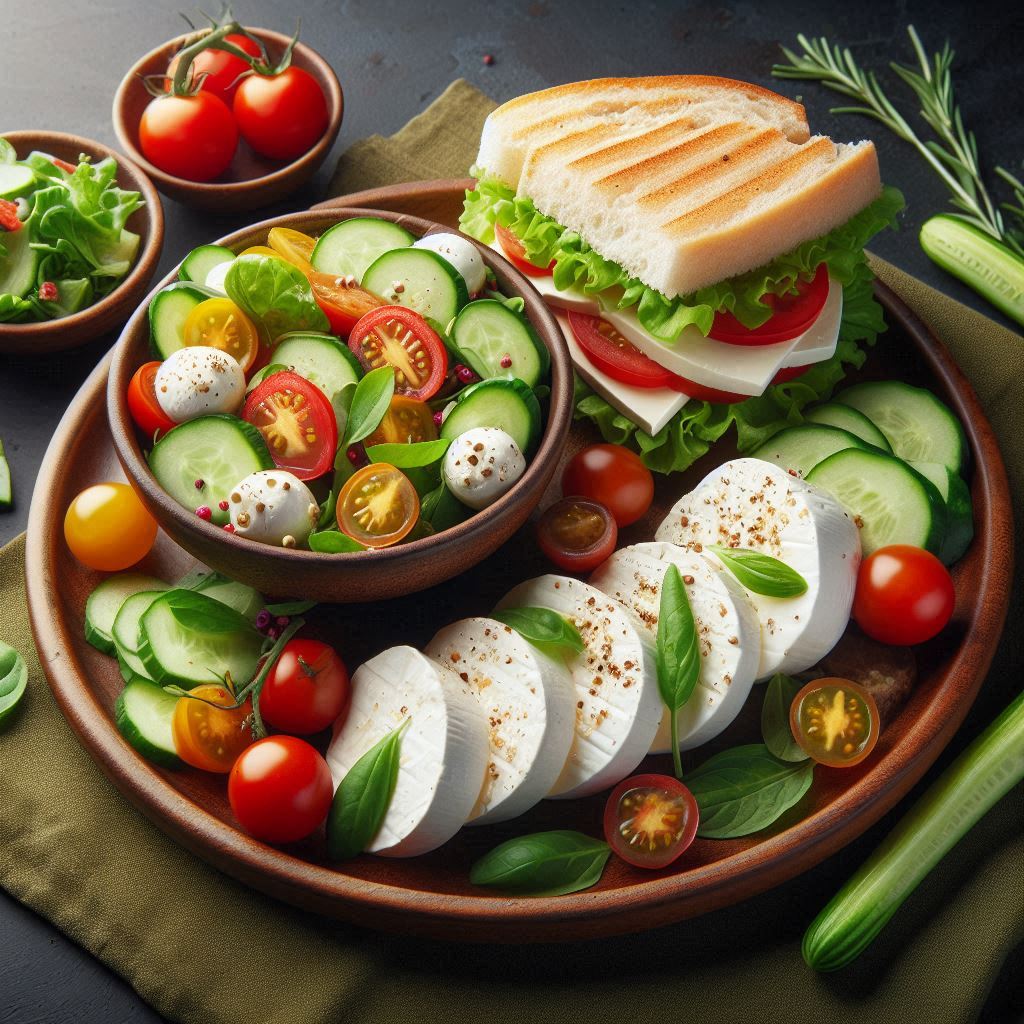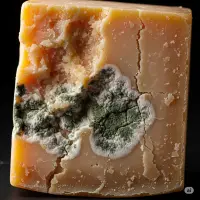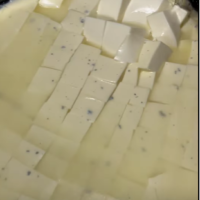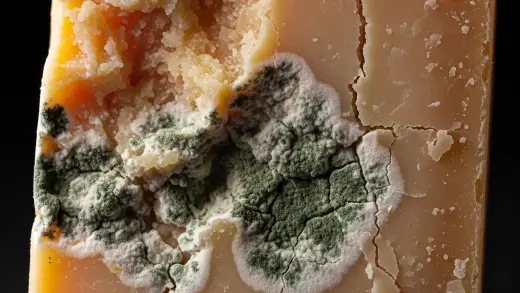Yes, eating cheese can contribute to weight gain if consumed in excess.
Cheese is a calorie-dense food, meaning it has a high number of calories per gram. While it can be a part of a balanced diet, overconsumption can lead to weight gain due to the increased calorie intake
You’ve probably heard that cheese makes you gain weight, and some people even say it’s a “fattening” food you should avoid.
While it’s true that cheese has calories and fat, it’s also full of good stuff like protein, calcium, and vitamins like B12. The truth is, cheese isn’t all bad—it can actually be part of a healthy diet if you eat it the right way.
The trick is to enjoy it in moderation, watch your portion sizes, and make sure the rest of your meals are balanced. So, if you like cheese, you don’t have to give it up completely—just be smart about how much you eat!

What Nutrients Are Found in Cheese?
Cheese is more than just a tasty snack—it’s packed with nutrients that can be good for you if you choose wisely. Let’s break down what’s inside cheese and how it affects your health.
Fat: Not All Fats Are Created Equal
Cheese contains fat, but not all fats are bad. While some cheeses have saturated fats, which were once thought to be the main cause of weight gain and heart problems, newer research shows that saturated fats aren’t as harmful as we once believed.
Cheese also has unsaturated fats, which are healthier and can support heart health. The key is balance—enjoying cheese in moderation as part of a varied diet.
Protein: A Great Source of Energy
Cheese is rich in protein, which helps keep you full longer and supports muscle growth. This makes it a great snack or addition to meals, especially if you’re active or trying to build strength.
Calories: It Depends on the Cheese
The calorie content of cheese varies depending on the type. For example, cheddar has more calories than mozzarella because it’s denser. If you’re watching your calorie intake, opt for lighter cheeses like feta or cottage cheese.
Sodium: Watch Out for Salt
Some cheeses, like feta or blue cheese, can be high in sodium, which isn’t great for your blood pressure if you eat too much. If you’re concerned about sodium, choose lower-sodium options like mozzarella or Swiss cheese.
Calcium: Strong Bones and Teeth
Cheese is an excellent source of calcium, which is essential for keeping your bones and teeth strong. Just one serving can give you a big boost toward your daily calcium needs.
Vitamins and Minerals: A Bonus Boost
Cheese also contains other nutrients like vitamin B12, which helps your body make energy, and zinc, which supports your immune system.
Nutritional Comparison of Cheeses
Here’s a quick look at how different cheeses stack up nutritionally (per 1-ounce serving):
| Cheese Type | Calories | Fat (g) | Protein (g) | Sodium (mg) | Calcium (% Daily Value) |
| Cheddar | 115 | 9.5 | 7 | 180 | 20% |
| Brie | 95 | 8 | 6 | 170 | 5% |
| Mozzarella | 85 | 6 | 6 | 150 | 15% |
| Feta | 75 | 6 | 4 | 260 | 10% |
As you can see, cheese offers a mix of nutrients, and the type you choose can make a big difference. By picking the right cheese and eating it in moderation, you can enjoy its benefits without overdoing it.

The Relationship Between Cheese and Weight
When it comes to weight, cheese often gets a bad rap. But the truth is, cheese itself isn’t the problem—it’s how much and how often you eat it. Let’s break down the relationship between cheese and weight to help you make smarter choices.
Calories In vs. Calories Out: The Basics
Weight gain or loss ultimately comes down to one simple rule: calories in versus calories out. If you eat more calories than your body needs, you’ll gain weight, no matter what food it’s from. Cheese, like any other food, can contribute to weight gain if you eat too much of it.
But if you enjoy it in moderation and balance it with your daily calorie needs, it can fit into a healthy diet without causing weight gain.
Portion Control
The secret to enjoying cheese without overdoing it is portion control. A healthy serving of cheese is about the size of a pair of dice or one slice (around 1 ounce). For example:
- A single cheese stick.
- A small handful of shredded cheese.
- One thin slice of cheddar or Swiss.
Cheese and Satiety: Feeling Full Longer
One of the benefits of cheese is that it’s high in protein and fat, which can help you feel full and satisfied after eating. This can actually help with weight management by preventing overeating later in the day.
For example, a small piece of cheese with some fruit or whole-grain crackers can make a satisfying snack that keeps you from reaching for less healthy options.
Metabolic Effects: What We Know
While some studies suggest that certain nutrients in cheese, like calcium and protein, might have a small positive effect on metabolism, the evidence isn’t strong enough to say cheese will boost your metabolism significantly.
The best approach is to focus on overall healthy eating habits rather than relying on one food to do all the work.
The Importance of Overall Diet
Cheese is just one piece of the puzzle when it comes to your diet. To maintain a healthy weight, it’s important to focus on the big picture.
A balanced diet that includes plenty of fruits, vegetables, whole grains, lean proteins, and healthy fats is key. Cheese can be part of that balance, but it shouldn’t take over your plate.
In short, cheese doesn’t have to be off-limits if you’re watching your weight. By paying attention to portion sizes, enjoying it as part of a balanced diet, and focusing on overall calorie intake, you can savor cheese without guilt.
Tips for Enjoying Cheese as Part of a Healthy Diet
Cheese can absolutely be part of a healthy diet—if you enjoy it the right way. Here are some practical tips to help you savor cheese without overdoing it:
Choose Lower-Fat Options
If you’re watching your calorie or fat intake, opt for cheeses that are naturally lower in fat. Some great choices include:
- Mozzarella: A lighter cheese that’s perfect for salads or sandwiches.
- Cottage Cheese: High in protein and lower in fat, making it a great snack or breakfast option.
- Feta: Adds a tangy flavor to dishes without too many calories.
- Goat Cheese: Creamy and flavorful, but often lower in fat than other soft cheeses.
Practice Portion Control
It’s easy to overdo it with cheese, so keep your portions in check. Here’s how:
- Use a food scale or measuring cups to stick to a 1-ounce serving (about the size of a pair of dice).
- Pre-portion cheese into small bags or containers for snacks.
- Grate cheese instead of slicing it—it spreads farther and feels more satisfying.
Pair Cheese with Healthy Foods
Cheese tastes even better when paired with nutrient-rich foods. Try these combinations:
- Fruits: Pair cheese with apples, pears, or grapes for a sweet and savory snack.
- Vegetables: Add cheese to a veggie platter with carrots, cucumbers, or bell peppers.
- Whole-Grain Crackers or Bread: Choose whole-grain options for added fiber and nutrients.
- Nuts: A handful of nuts with a small piece of cheese makes a satisfying, balanced snack.
Incorporate Cheese into Recipes Mindfully
You don’t have to give up cheesy dishes—just make them healthier! Here are some ideas:
- Veggie-Packed Omelets: Add a sprinkle of cheese to an omelet filled with spinach, tomatoes, and mushrooms.
- Whole-Grain Pasta: Use a small amount of grated Parmesan or mozzarella to top a pasta dish loaded with veggies.
- Stuffed Bell Peppers: Fill peppers with a mix of quinoa, black beans, and a little shredded cheese for a balanced meal.
Homemade Pizza: Use whole-wheat crust, load up on veggies, and go light on the cheese.
By choosing smarter options, controlling portions, and pairing cheese with healthy foods, you can enjoy its delicious flavor without compromising your health goals. Cheese is all about balance—so savor it wisely!
Tips for Enjoying Cheese as Part of a Healthy Diet
Cheese can be a delicious and nutritious part of your diet when enjoyed in the right way. Here are some practical tips to help you make the most of cheese without overdoing it:
Choose Lower-Fat Options
If you’re looking to cut back on calories or fat, try these lighter cheese options:
Mozzarella: A versatile cheese that’s lower in fat and calories, perfect for salads, sandwiches, or pizza.
Cottage Cheese: High in protein and low in fat, making it a great snack or breakfast option.
Feta: Adds a tangy flavor to dishes without too many calories—great in salads or on roasted veggies.
Goat Cheese: Creamy and flavorful, but often lower in fat than other soft cheeses.
Ricotta: A lighter option for spreads, dips, or even desserts.
Practice Portion Control
Cheese is calorie-dense, so keeping portions in check is key. Here’s how:
- Stick to a 1-ounce serving (about the size of a pair of dice or your thumb).
- Use a kitchen scale or measuring cups to avoid over-pouring shredded cheese.
- Pre-portion cheese into small bags or containers for easy, controlled snacking.
- Grate cheese instead of slicing it—it spreads farther and feels more satisfying.
Pair Cheese with Healthy Foods
Balance your cheese intake by pairing it with nutrient-rich foods. Try these combinations:
- Fruits: Pair cheese with apples, pears, or grapes for a sweet and savory snack.
- Vegetables: Add cheese to a veggie platter with carrots, cucumbers, or bell peppers.
- Whole-Grain Crackers or Bread: Choose whole-grain options for added fiber and nutrients.
- Nuts: A handful of nuts with a small piece of cheese makes a satisfying, balanced snack.
Use Cheese with Recipes carefully
You don’t have to give up cheesy dishes—just make them healthier! Here are some ideas:
Veggie-Packed Omelets: Add a sprinkle of cheese to an omelet filled with spinach, tomatoes, and mushrooms.
Whole-Grain Pasta: Use a small amount of grated Parmesan or mozzarella to top a pasta dish loaded with veggies.
Stuffed Bell Peppers: Fill peppers with a mix of quinoa, black beans, and a little shredded cheese for a balanced meal.
Homemade Pizza: Use whole-wheat crust, load up on veggies, and go light on the cheese.
Cheese and Veggie Quesadillas: Use whole-wheat tortillas, add plenty of veggies, and use just enough cheese to hold it together.
Conclusion
You know how some people say cheese is the enemy when you’re watching your weight? Well, let’s clear that up right now. You absolutely can enjoy cheese as part of a healthy and balanced diet without it throwing your weight goals off track.
The trick isn’t swearing off cheese forever, but understanding what it brings to the table (literally!) and enjoying it thoughtfully.
Think of it this way: Your weight journey is all about the balance between the calories you take in and the calories you use up. Cheese has calories and fat, yes, but it’s also a fantastic source of protein and calcium—nutrients your body needs.
So, the key is how much you enjoy. A sensible serving of cheese can totally hit the spot without overloading you with calories.
And here’s the other big thing: What you eat overall matters just as much, if not more. If your diet is generally healthy—packed with colorful fruits and veggies, lean proteins, and whole grains—a little cheese here and there won’t hurt a thing.
But even if you’re nibbling tiny bits of cheese, a diet filled with processed goodies, sugary drinks, and way too many calories will likely lead to weight gain, regardless.















